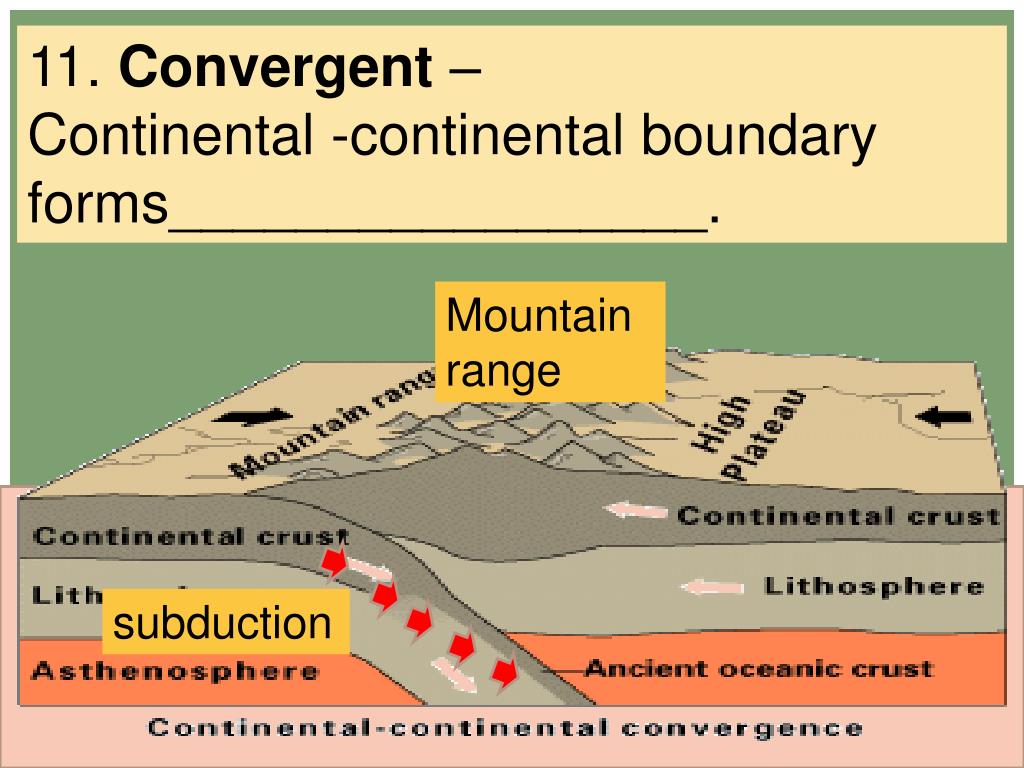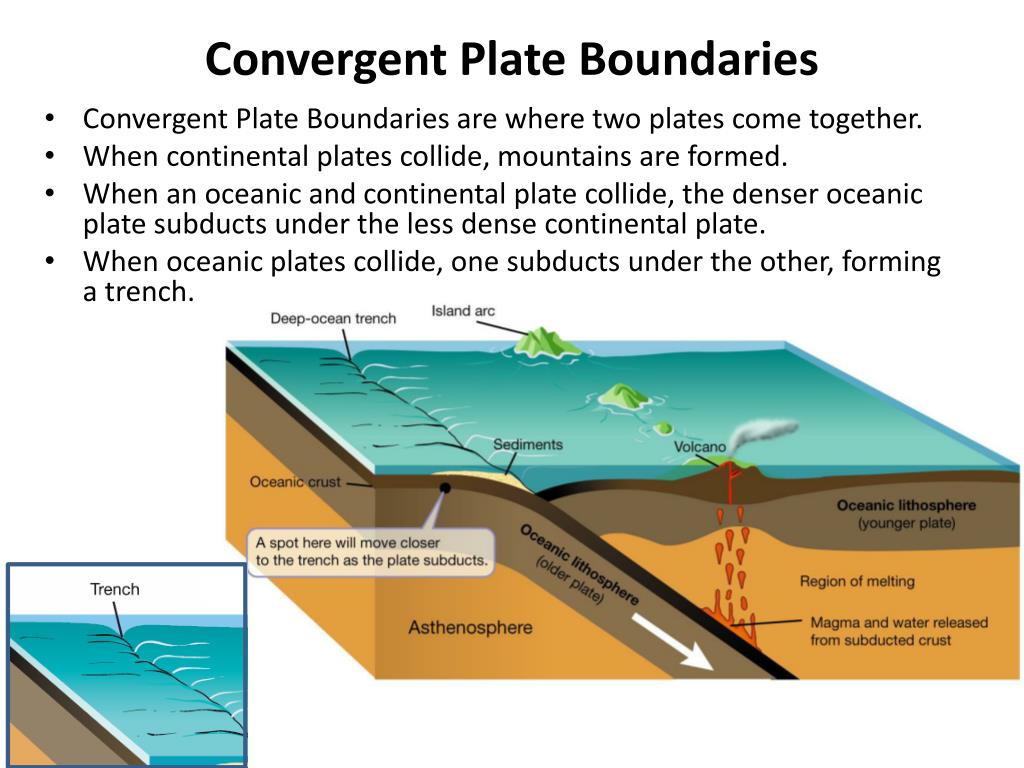


On the overriding plate, a volcanic island arc (a chain of off-shore volcanoes) forms parallel to the trench. Oceanic-oceanic convergent boundary: Converging oceanic plates form trenches in the subduction zone, the point where the denser plate is subducted. While the motion of the plates is the same, the resulting landforms can be very different depending on the type of plates involved. Convergent BoundaryĬonvergent boundaries occur when two plates move towards each other (converge).

At each boundary, the resulting landforms depend on whether the plates involved are oceanic, continental, or both types.įigure 1: The three categories of plate boundaries: convergent, divergent, and transform. In this region, the continental crust on both sides of the plate boundary are too light to sink into the mantle.There are three categories of plate boundaries: convergent, divergent, and transform. Migration of "India" away from ancient Pangaea has led to the collision of continental land masses resulting in the rise of the Himalayan Mountains. Appalachians Mountains in the eastern United States (formed when North America collided with Africa about 350-400 million years ago (before the Atlantic Ocean opened later).įigure 4.18.Alps Mountains are being pushed up by collisions between Africa (and Italian Peninsula) with Europe.Himalayas (India) beginning 45 million years ago) (Figure 4.18).Mountain building occurs with lots of earthquakes massive erosion also occurs.This is where you form the very large mountain chains.Both are very buoyant and want to "float" or ride high.When continents collide with other continental landmasses: Subduction zones associated with ocean trenches surround much of the Pacific Ocean Basin.Ĭ) Continental Collisions: continental crust (CC) colliding with continental crust (CC) Subduction zones are where oceanic crust is destroyed and new continental crust forms. Subduction zone geometry (OC/CC) is revealed by the location of earthquakes and volcanic activity. Rainier, Mount Shasta, Crater Lake and many others) Figure 4.15. Cascades in United States (include such volcanoes as Mt.Rates of subduction are up to 15 cm/yr in the active margins of the Pacific Basin.Subduction reduces amount of (and destroys) OC.Trenches are especially well developed in regions far away from spreading centers (where the ocean crust is old, cold, and denser, and therefore sinks more rapidly).



 0 kommentar(er)
0 kommentar(er)
